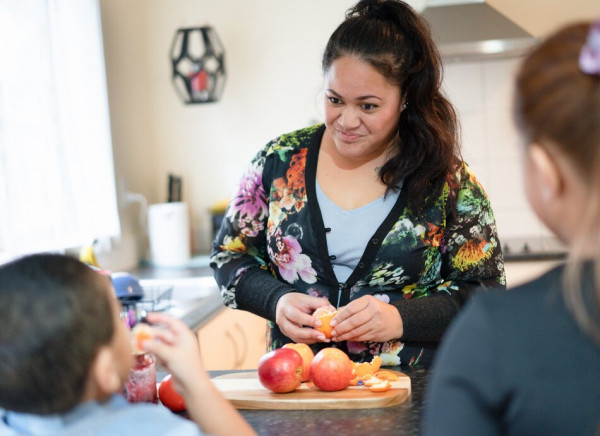Video: 1a Diabetes - Overview & Symptoms
Videos: Diabetes series of 10 videos(external link) Healthify He Puna Waiora, NZ

Low or no data? Visit zero.govt.nz, scroll down the page then click on our logo to return to our site and browse for free.

Videos: Diabetes series of 10 videos(external link) Healthify He Puna Waiora, NZ
Diabetes is a condition where the level of glucose (a type of sugar) in your blood is too high. The amount of glucose in your blood is controlled by several different hormones, but the main one is insulin. The organ that makes insulin is your pancreas. If you have type 2 diabetes, you have some damage to your pancreas and do not respond to insulin as well as people without diabetes.
Type 2 diabetes is a progressive disease, which means that, without appropriate treatment and lifestyle change, it slowly gets worse with time. This is because the cells that produce insulin in your pancreas continue to be damaged or die. Your body becomes even less able to make enough insulin to balance your blood glucose.
Type 2 diabetes can also occur in children. Most children with diabetes have type 1 diabetes, which is an auto-immune disease where your body attacks cells in your pancreas so that not enough insulin is produced. However, children who become overweight can develop type 2 diabetes. Usually there is a family history of diabetes and often these children belong to ethnic groups that are more likely to develop diabetes. Type 2 diabetes is more common in people of Māori, Pacific and South Asian descent.
This video may take a few moments to load.
Many people have type 2 diabetes for years without realising it, because they don’t have symptoms.
If you do get symptoms, these may include:
Diabetes is diagnosed using a simple blood test called an HbA1c test. Your doctor will suggest testing for diabetes if you have symptoms that might be due to diabetes. If you are in the high-risk group for type 2 diabetes but don’t have symptoms, your doctor will also request an HbA1c test. Checking for diabetes when you have risk factors, but no symptoms, is known as ‘screening’.
Read more about what my HbA1c results mean.
You should be screened for diabetes if you:
If this applies to you, it's recommended that you get checked for type 2 diabetes (or prediabetes), even if you don't have symptoms. It’s easy to test for diabetes and it's important to find out, so you can take steps to prevent diabetes-related health problems.
Diabetes increases the risk of many serious conditions such as poor vision, heart disease or stroke, damage to your kidneys (diabetes is the top cause of kidney failure), erectile dysfunction and loss of limbs.
The best way to avoid or delay developing diabetes-related health problems is by keeping your blood glucose and blood pressure levels within the healthy range. You can do this by following the advice on managing type 2 diabetes below, which includes lifestyle changes and medicines.
Read more about how blood glucose control is measured.

Image credit: Canva
The treatment goal for type 2 diabetes is to keep your blood glucose levels within the healthy range as much as possible. Type 2 diabetes is a condition that can be improved by changes in your lifestyle. These changes also help you if you have high blood pressure or too much fat or cholesterol in your bloodstream.
Your doctor will suggest you make changes to your lifestyle first. If these changes work, you may not need to take medication, but even if you do need medicines, you should still try hard to have a healthy lifestyle.
Read more about self-care with diabetes.
Diabetes medications are started when lifestyle changes on their own haven't been enough to keep your blood glucose to health levels. Sometimes, medicines may be prescribed at diagnosis if blood glucose levels are very high. Diabetes medicine doesn't replace lifestyle changes – it's used in addition to eating a healthy balanced diet, weight loss and regular exercise.
There are a variety of medicines used to treat type 2 diabetes – most are available as tablets. The most commonly prescribed medicine is metformin. Some people also need insulin, which is available as an injection only.
Your diabetes may be well controlled on 1 medicine alone, or you may need a combination of medicines, including a combination of tablets and insulin injections. Every person’s care plan is different and your healthcare provider will work with you to find the best treatment plan for you.
Read more about diabetes medications.
Insulin injections are needed if your body stops producing enough insulin. With time, many people with type 2 diabetes need to use insulin injections.
The common ways of using insulin for type 2 diabetes include:
Read our page on starting insulin and see the booklet Starting insulin in type 2 diabetes(external link) (Waitematā DHB) available in 5 languages including Samoan and Tongan. There are links below.
There are many groups and people keen to share their knowledge and tips for living well with diabetes. Diabetes NZ(external link) has branches around the country with a wide range of services, resources, groups and shops.
You also find more support options on the diabetes support page.
Auckland District Health Board region
Waitemata DHB region
Counties Manukau – most areas covered – check with your GP.
Auckland wide
Hutt Valley
Nelson/Marlborough
Nelson Bays Primary Health(external link) and Marlborough Primary Health(external link). Alternatively you could contact Health New Zealand |Te Whatu Ora Nelson Marlborough(external link) and ask about diabetes programmes.
MidCentral District Health Board region – Diabetes Trust(external link) provide diabetes self-management education classes for the Palmerston North region. Phone: 06 357 5992, or use their contact email address(external link). Details of the courses can be found on the Diabetes Trust(external link) page.
Other regions
These videos may take a few moments to load.
Annette is one of over 200,000 New Zealanders with type two diabetes. Sadly, she ignored the warning signs and now is experiencing severe consequences, she depends on a dialysis machine to do the work of her kidneys. Annette's story is presented in English and te reo Māori.
(Faultline Films NZ, 2010)
Lisa Clayton Kāi Tahu/Rangitāne is one of over 200,000 New Zealanders who know they have type 2 diabetes. It's estimated that another 100,000 people have the disease without knowing it. If Lisa is going to avoid some nasty complications she needs to take action now (this video is mostly spoken in Māori).
(Faultline Productions & Te Māngai Pāho, NZ, 2010)
(Attitude Live, NZ)
Brian Kairau can't feel his feet. Years of type 2 diabetes has damaged the small blood vessels leaving him vulnerable to infection. Will doctors be able to save his foot from amputation?
(Attitude Live, NZ)
At 52, former gang leader turned youth worker Brian Kairau has one more dream left: riding a Harley.
(Attitude Live, NZ)
To view more videos of the same series, visit Attitude Live: The disease that is killing my family(external link) (Attitude Live, NZ) presented in English.
Diabetes topics
What is diabetes?
Prediabetes | Tūraru mate huka
Home blood glucose testing for type 2 diabetes
Glycaemic index (GI)
Medicines for type 2 diabetes
Driving with diabetes
Diabetes and eye problems
Diabetes self-management programmes
Diabetic foot ulcer
Low blood glucose (hypoglycaemia)
Diabetic neuropathy (nerve damage)
Sick day plan for people with type 2 diabetes
Diabetes and smoking
Diabetes and Ramadan
Diabetes NZ(external link)
Diabetes UK(external link)
To find out what diabetes education is available in your region, ask your local branch of Diabetes NZ, other regional support organisation or your healthcare provider.
Brochures
Apps/tools
See our page on diabetes for healthcare providers

Healthify He Puna Waiora, NZ and Mediboard, 2023
English, te reo Māori, Samoan, Tongan, Chinese (simplified), Chinese (traditional), Cook Islands Māori, Hindi, Niuean, TuvaluanCredits: Healthify editorial team. Healthify is brought to you by Health Navigator Charitable Trust.
Reviewed by: Claire Salter, Pharmacist, Tauranga.
Last reviewed: